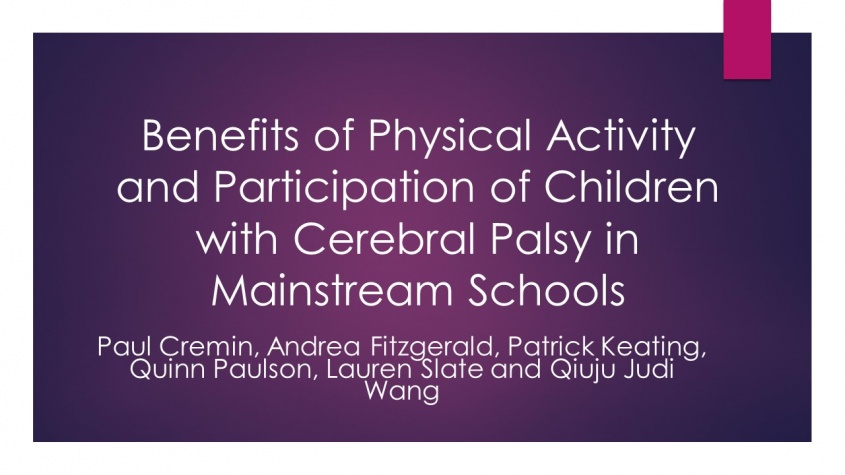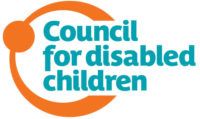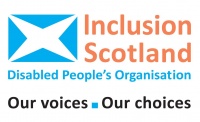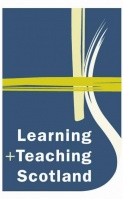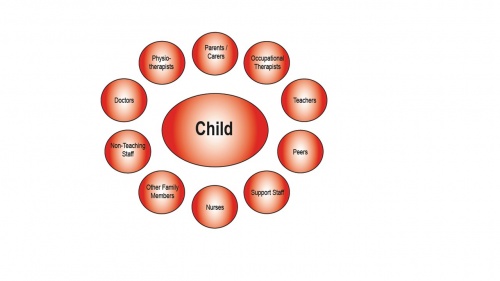Benefits of Physical Activity of Children With Cerebral Palsy in Mainstream Schools
INTRODUCTION[edit | edit source]
LEARNING OUTCOMES[edit | edit source]
- Recognize and describe the common clinical manifestations of CP and the potential impacts on participation in the school setting.
- Evaluate the importance and benefits of physical activity in students with CP.
- Construct a tailored teaching plan to accommodate specific needs of students with CP.
- Demonstrate improved awareness and application of current guidelines and recommendations for students with CP in the mainstream school setting.
WHAT IS CEREBRAL PALSY[edit | edit source]
EDUCATION FOR CHILDREN WITH A DISABILITY[edit | edit source]
Education for Children with Disabilities Within the United Kingdom (UK) it is the right of every child between the ages of 5 – 16 years old to receive an education, and to be offered a free place at a state school (Education and Learning, 2014). This framework extends to children and young adults with disability. The Equality Act (2010) states that it is against the law for schools and other education providers to discriminate against children with disability.
Special education needs (SEN) is an umbrella term utilized to describe individuals who have learning difficulties or disabilities which make it harder for them to learn than most other individuals of the same age. The needs of children and young people have been categorized into four areas by the 0-25 SEND Code of Practice
These include;
-Communicating and interacting
- Cognition and learning
- Social, emotional and mental health difficulties
- Sensory and/ or physical needs
Disability exists in many children and young people who have SEN. The Equality Act (2010) defines disability as; ‘A physical or mental impairment which has a long-term (a year or more) and substantial adverse effect on their ability to carry out normal day-to-day activities.’ Cerebral Palsy is classed as a disability as it is a life-long condition which needs regular input for specialists and therapists.
Individuals with disability often require higher levels of provision, to ensure they are given the same opportunities than those who are not disabled (Debenham, 2012). In order to aid the delivery of the national curriculum to children and young people with SEN, an Individual Education Plan (IEP) can be designed to optimise the education that individual receives. Using the curriculum being followed as a basis, the IEP creates strategies which are being utilised in order to help them meet their additional needs.
CEREBRAL PALSY AND MAINSTREAM SCHOOLING
“BEING A PART, NOT APART”
The Council for Disabled Children (CDC) is an blanket term for a group of organizations that hold a range of perspectives on inclusion. It is a group of council members with diverse backgrounds including professionals, parent representatives and representatives of disabled people. The CDC’s main sector is based in England, but with links to other UK nations. The CDC celebrates what is working well in the education system and family life for children and young people with disabilities and demonstrates this through their policies (CDC 2014).
INCLUSION POLICIES
[edit | edit source]
The CDC, Inclusion Scotland and LTS are three organisations which support and promote the inclusion of children with disabilities into mainstream schooling. The CDC believes that special schools should hold a close link to the mainstream setting so that one day all children are included into the mainstream schooling system (CDC, 2014).
“With the proper support and encouragement, many more disabled children could be included into the mainstream school system” (CDC 2014, p.5).
They believe that by promoting inclusion, both disabled children and their non-disabled peers benefit (CDC, 2014). Separating children with disability does not prepare them for life in a predominantly non-disabled world (ISDPO 2014, p.4). It is believed disabled individuals are happy to attend mainstream schools, as it allows both them and non-disabled individuals for later in life (ISDPO 2014, p.4-5). All the while, The Education Act (2004) ensures those who require extra support receive it (LTS, 2014).
[edit | edit source]
Presumption of Mainstream Schooling[edit | edit source]
Standards in Scotland’s Schools Act 2000 introduced a “presumption of mainstreaming” which states that;
◘ All children and young people will have access to mainstream education unless there are exceptional circumstances (LTS 2014, p. 7).
◘ They key principles to such support is through true knowledge your students as a learner and person, as well as understanding their barriers. COMMUNICATION and TEAMWORK with the student, their parents, carers and professional supporters is vital (LTS 2014, p.10).
Making it Happen
Creating and Maintaining an Inclusive Community; “School is a Place for Everyone”
The Education Scotland Act 2004 states that School must be considered a place where;
◘ certain principles are the heart of all that happens
◘ each and every individual has a value and worth
◘ people feel they belong
◘ people learn
◘ everyone can achieve
◘ responsibility is shared
◘ there is no exclusion by expectation
◘ prejudice and discrimination are countered and their negative effects greatly diminished” (LTS 2014, p.16))
Schooling and Children with Disabilities[edit | edit source]
(CDC, 2014)
Including Children with CP in mainstream physical education lessons[edit | edit source]
A study was done in order to investigate elementary school children with CP’s perceptions on the advantage of and barriers to, attending mainstream physical education classes. The study was conducted through individual interviews with students with CP, teachers and teaching assistants (Hilderley and Rhind 2012).
Three main advantages of CP students attending mainstream physical education classes;
1. Psychological benefits (improved self-esteem/body image)
2. Social Benefits (developing relationships)
3. Physical benefits (improved mobility)
BARRIERS were identified as being;
1. Environmental (appropriate facilities)
2. Organizational (appropriate staff:class size)
3. The disability (wheelchair)
4. Attitudinal (of peers/staff and child)
In conclusion, there is a an obvious need for mainstream school teacher’s to work on promoting the potential advantages and overcoming barriers to the inclusion of students with CP. Additionally, it is clear that this is done most easily through understanding people’s own perceptions on inclusion (Hilderley and Rhind 2012)
WHAT CAN MAINSTREAM SCHOOL TEACHERS DO?
It is important for teachers to understand that children with CP enjoy the same types of activities and can do the same types of activities that children without CP can (The Nemours Foundation 2014).
The following tips may help mainstream primary school teachers promote inclusivity for students with CP;
★ Allow children with CP more time to travel to and from classes
★ Allow children with CP a longer amount of time in order to complete assessments
★ Ensure your classroom is easy to get around and free of obstacles
★ Understand that children with CP may miss more class time due to medical appointments
★ Include parents, medical staff, therapists, and the student in order to develop the best education plans for a student with CP
★ Be prepared for possible medical emergencies by planning ahead with parents in case your students with CP need advanced assistance (The Nemours Foundation 2014)
DISABILITY INCLUSION TRAINING FOR THE EDUCATION SECTOR
In 2012 Scottish Disability Sport (SDS) received financial backing from both the Scottish government and Education Scotland in order to offer disability inclusion training. The training is aimed at early years and primary teachers, specialist PE teachers, trainee teachers and learning support staff. It is offered at no cost. The training is tailored to encourage disabled children to lead a full and active lifestyle, through inclusion with their non disabled peers (SDS 2012).
MOVEMENT OPPORTUNITIES VIA EDUCATION (MOVE) PROGRAMME[edit | edit source]
In the 1980’s, Linda Bidabe designed the Movement Opportunities Via Education (MOVE) program. The program was designed, as it was being found that pupils with severe disability were leaving school with less skills than when they first attended. The emphasis of the program is to develop functional and meaningful outcomes for the individual utilising current theories of motor development and activity based programs (Kern County Superintdent of Schools, 1990). The program has been developed to support those with differing levels of abilities and in a multitude of different settings. A top-down Motor milestone assessment is used; therefore concentrating on the current abilities of the child.
From the simpler tasks to a more complex tasks, individuals are taught skills to optimise their independent functioning (van der Putten, Vlaskamp, Reynders, & Nakken, 2005). Activities relate to sitting, standing, transferring and walking. By using a collaborative team approach and a six step method, MOVE develops goals and priority goals to implement an intervention (Bidabe, Barnes, & Whinnery, 2001). The six steps of MOVE are as follows:
References[edit | edit source]
[edit | edit source]
COUNCIL FOR DISABLED CHILDREN., 2014. Council for Disabled Children Inclusion Policy [online]. London. [viewed 9 November 2014]. Available from: http://www.councilfordisabledchildren.org.uk/resources/cdcs-resources/inclusion-policy
HILDERLEY, E. and RHIND, D., 2012. Including children with cerebral palsy in mainstream physical education lessons: a case study of student and teacher experiences. Graduate Journal of Sport, Exercise, and Physical Education Research [online]. vol. 1, pp 1-15 [viewed 30 October 2014] Available from: http://www.worcester.ac.uk/gjseper/documents/Children_with_cerebral_palsy_in_mainstream_physical_ed_case_study_student_teacher_experiences.pdf
INCLUSION SCOTLAND DISABLED PEOPLE’S ORGANISATION., 2014. A Vision for an Inclusive Scotland [online]. Edinburgh. [viewed 1 November 2014]. Available from: http://www.inclusionscotland.org/documents/AVisionBooklet.pdf
LEARNING AND TEACHING SCOTLAND., 2014. Focusing on Inclusion: a Paper for Professional Reflection [online]. 3rd ed. Scotland. [viewed 7 November 2014]. Available from: http://www.educationscotland.gov.uk/images/FocusingOnInclusion_tcm4-342924.pdf
SCOTTISH DISABILITY SPORT., 2014. Successful disability inclusion training for the education sector [online]. [viewed 2 November 2014]. Available from: http://www.scottishdisabilitysport.com/sds/index.cfm/news/latest-news1/successful-disability-inclusion-training-for-the-education-sector/
THE NEMOURS FOUNDATION., 2014. Cerebral Palsy Special Needs Fact Sheet [online]. [viewed 2 November 2014]. Available from: http://kidshealth.org/parent/classroom/factsheet/cp-factsheet.html
EDUCATION AND LEARNING., 2014. Types of School [online]. [Viewed 16 November 2014]. Available from: https://www.gov.uk/types-of-school/overview.
THE NATIONAL ARCHIVES. (2010). Equality Act 2010. [online]. [Viewed 16 November 2014]. Available from: http://www.legislation.gov.uk/ukpga/2010/15/part/6/enacted.
DEBENHAM, L. . (2012). The Special Education Needs and Disability Act. . [online]. [Viewed 8 November 2014]. Available From: http://www.aboutlearningdisabilities.co.uk/special-educational-needs-disability-act.html.
KERN COUNTY SUPERINTENDENT OF SCHOOLS. (1990). MOVE: Mobility Opportunities Via Education. Bakersfield, CA, Little green press. VAN DER PUTTEN, A., VLASCAMP, C., REYNDERS, K & NAKKEN, H. (2005). Reducing support: research into the effects of movement-oriented activities on the level of support when performing movement skills for children with profound intellectual and multiple disabilities. Postbus, Groningen: Stichting kinderstudies.
BIDABE, L., BARNES, B., WHINNERY, W. (2001). MOVE: Raising expectations for individuals with severe disabilities. Physical Disabilities: Education and Related services. 19 (2), 31-48.
BARNES, B & WHINNERY, W. (2002). Effects of functional mobility skills training for young students with physical disabilities. Exceptional Children. 68(3). 313-324.
==
Insert non-formatted text here
'Bold text ]]Link title
